Science Museum opens new gallery charting London’s historic development
Gitta Gschwendtner creates an abstract cityscape for permanent exhibition at the Science Museum that showcases London’s stratospheric evolution between 1550 and 1800
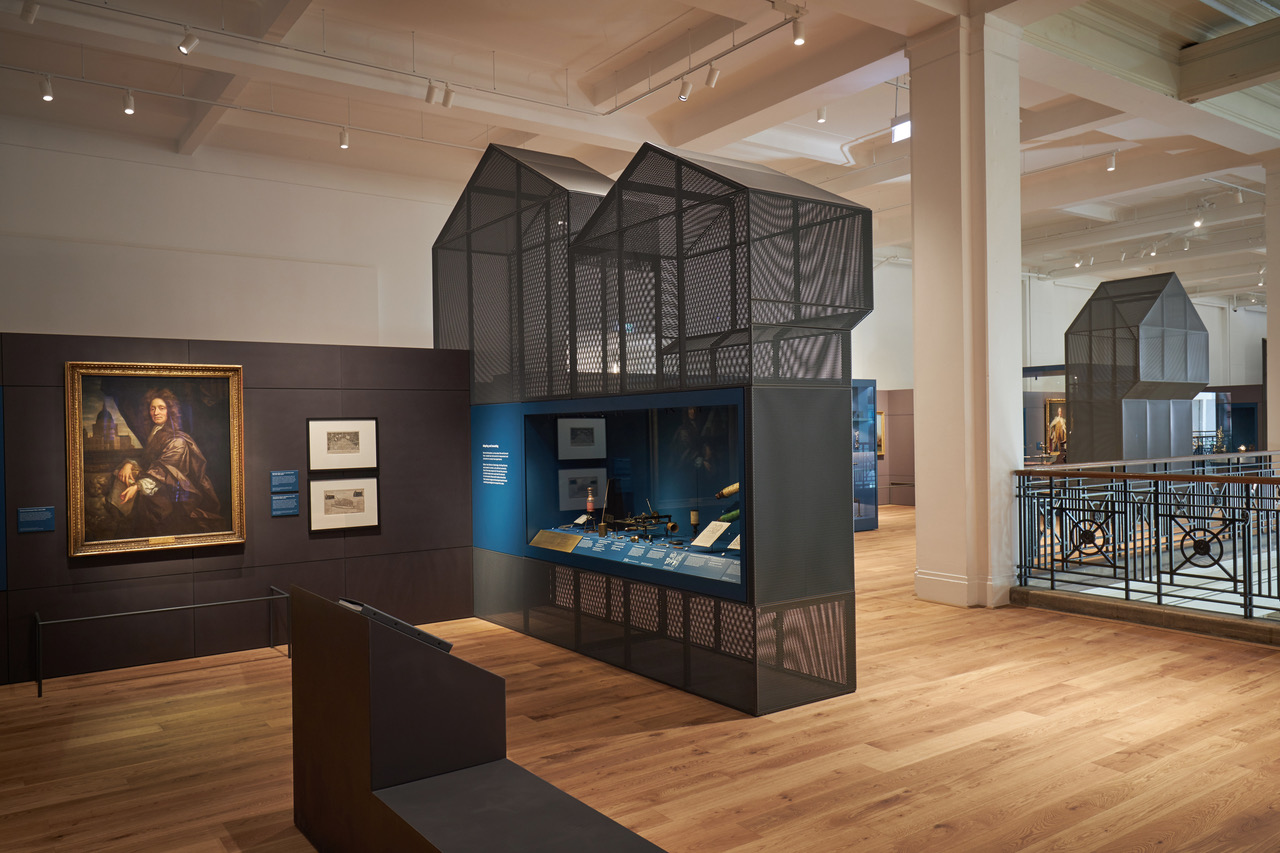
London is a city built on Science. It's where Dr Robert Hooke used his microscope to observe the smallest, previously hidden details of the natural world; where Sir Isaac Newton proposed the law of gravity and the three laws of motion; and where revolutionary construction machinery was used to build architectural icons such as Westminster Bridge. All of these advancements took place between 1550 and 1800 – a 250 year time period that was particularly transformative for London, when it grew from a modest commercial centre to major world city.
Its stratospheric development during this time is the focus of a new permanent gallery at the city's Science Museum. Realised as an abstract cityscape designed by Gitta Gschwendtner, the 650 sq m gallery charts the city's expansion through objects taken from three collections: the Science Museum Group Collection; King’s College London’s King George III collection; and objects and artworks lent by the Royal Society.
These objects, that include Hooke's microscope and Newton's Principia Mathematica, are displayed across a series of vitrines and room sets all housed within a neighbourhood of transparent mesh houses that offer glimpses into other parts of the exhibition.
‘The starting point for my research were drawings and etchings of London from 1550-1800, the time period of the exhibition,’ explains Gschwendtner. ‘The drawings show how London changes over the time, but also how building from different periods coexist alongside each other. Based on that research I have identified a few key characteristics and created a range of abstracted mesh houses.’
‘Not a single house in the exhibition is identical, they share similar characteristics, but amazingly we managed to create them all from an incredible jigsaw of unique punched panels.’
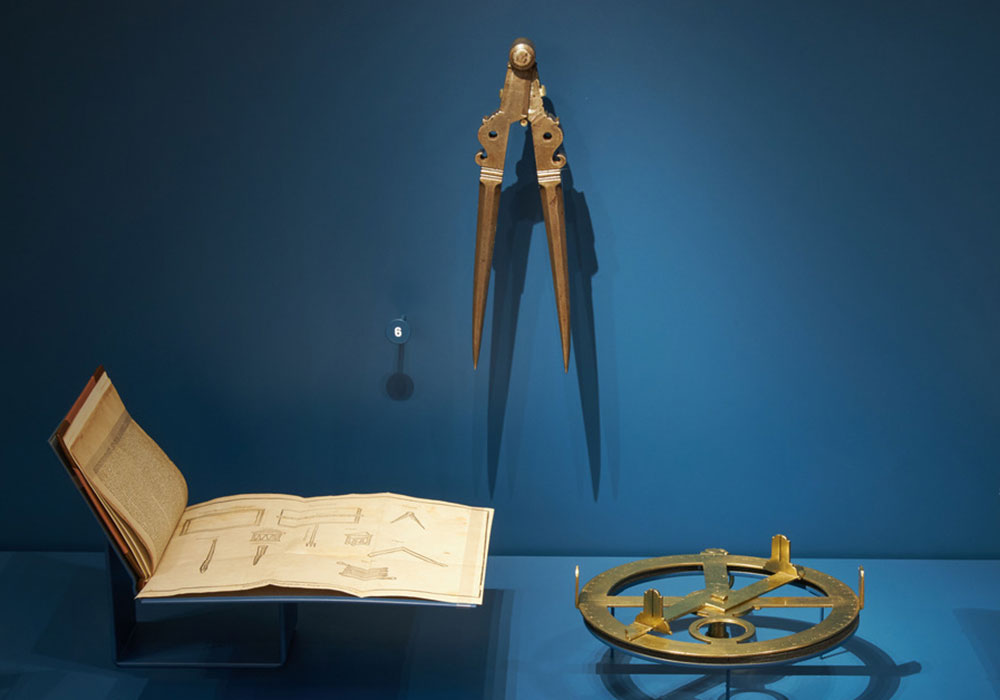
To reflect the growth of London during this time period, the exhibition's layout changes as visitors journey through its abstract streets. At the beginning, where objects from the 16th century are displayed, the layout is denser and busier with black mesh houses. These narrower houses with pitched roofs and stepped upper floors are a clear nod to the timber-framed buildings that lined the city streets in the 16th and 17th centuries.
Then gradually, as the visitor progresses into the 18th century, the layout becomes more minimal, changing from black to light grey to denote London's new status as a major centre of the empire. Here, the mesh house structures become more simplified, transitioning to flat fronted Georgian town houses.
The starting point for my research were drawings and etchings of London from 1550-1800
Objects and text are displayed throughout on a teal blue backdrop selected by Gschwendtner and the exhibition's graphic designer Martin McGrath. ‘The exhibition features a lot of brass and timber objects and teal blue seemed to work best at bringing out these materials,’ explains Gschwendtner. ‘We established that it would work well to showcase all content, be it objects, graphics or illustrations on a band of teal across all sections.’
Along the exhibition's grid of streets, visitors will come across a series of monochrome room sets designed by former Wallpaper* interiors editor Leila Latchin. Designed to illustrate the back stories of the real objects set within them, the perspective-bending rooms contain a large amount of historic information in a small amount of space.
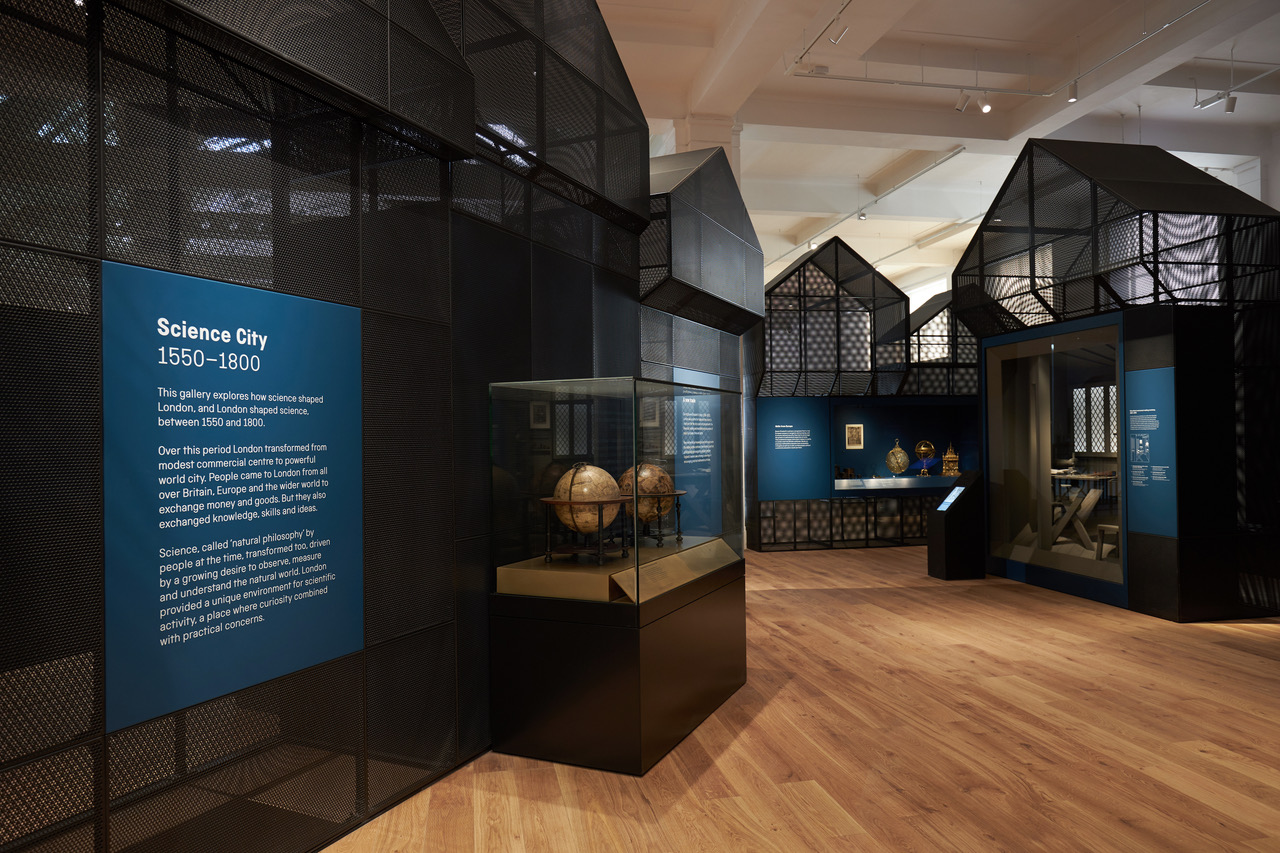
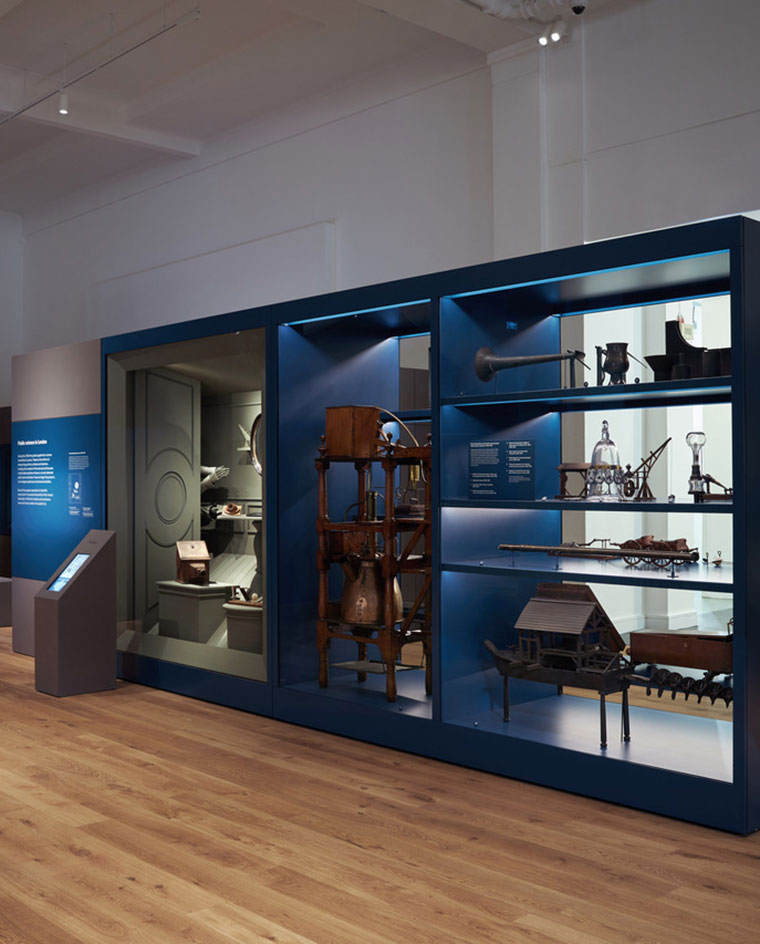
ADDRESS
Exhibition Rd
South Kensington
London
SW7 2DD
Receive our daily digest of inspiration, escapism and design stories from around the world direct to your inbox.
Ali Morris is a UK-based editor, writer and creative consultant specialising in design, interiors and architecture. In her 16 years as a design writer, Ali has travelled the world, crafting articles about creative projects, products, places and people for titles such as Dezeen, Wallpaper* and Kinfolk.
-
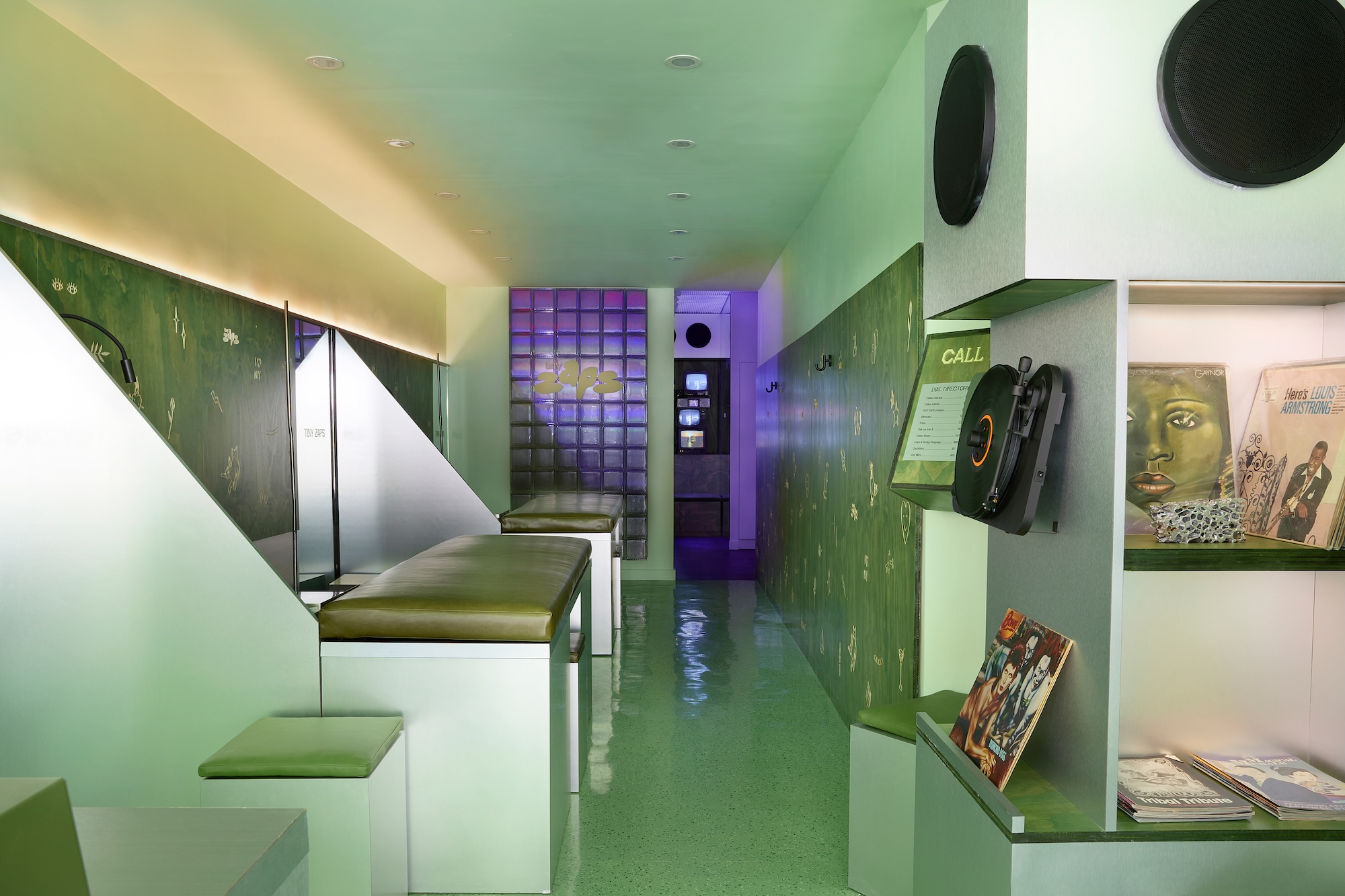 Terrified to get inked? This inviting Brooklyn tattoo parlour is for people who are 'a little bit nervous'
Terrified to get inked? This inviting Brooklyn tattoo parlour is for people who are 'a little bit nervous'With minty-green walls and an option to 'call mom', Tiny Zaps' Williamsburg location was designed to tame jitters
-
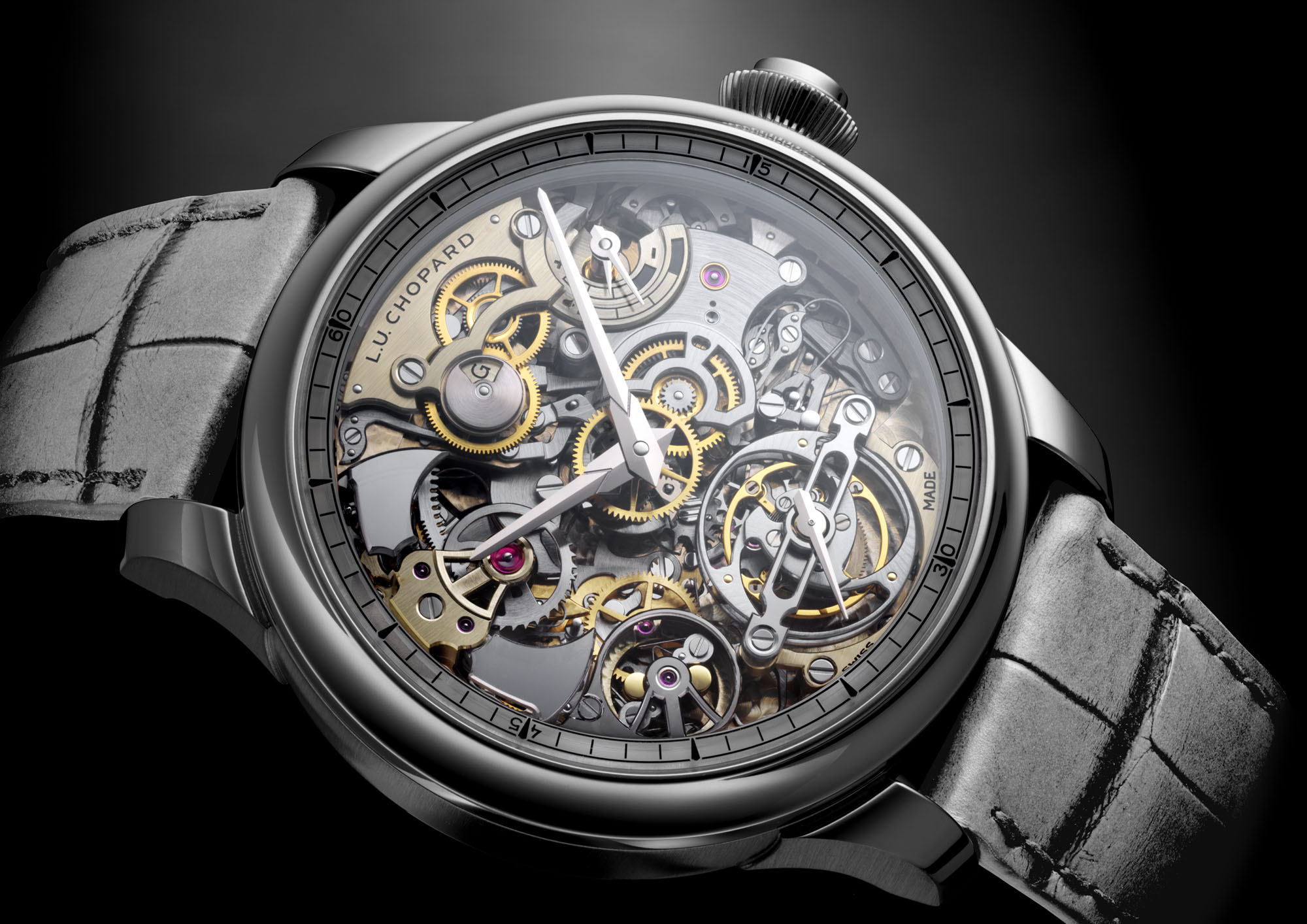 Let’s hear it for the Chopard L.U.C Grand Strike chiming watch
Let’s hear it for the Chopard L.U.C Grand Strike chiming watchThe Swiss watchmaker’s most complicated timepiece to date features an innovative approach to producing a crystal-clear sound
-
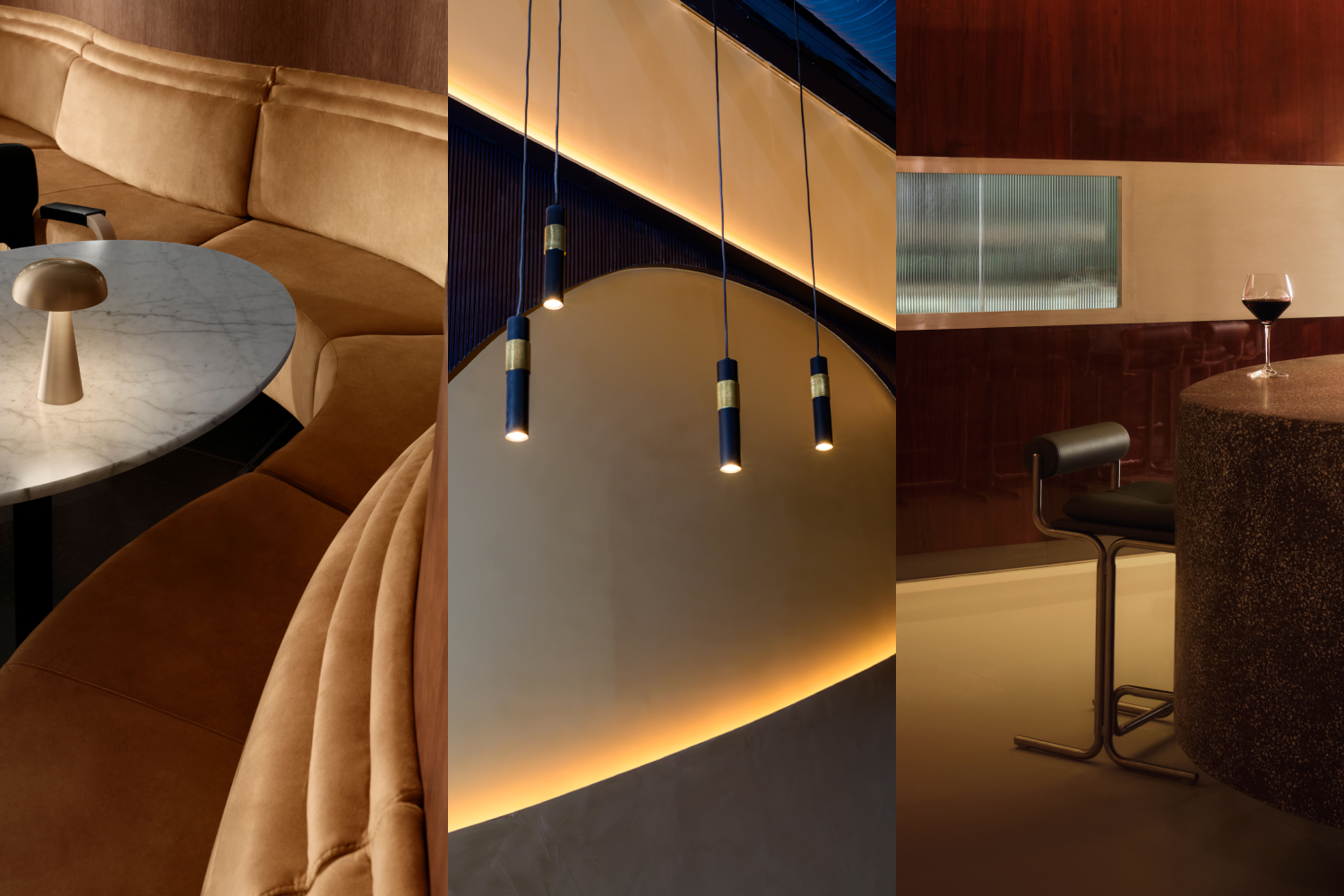 Form... and flavour? The best design-led restaurant debuts of 2025
Form... and flavour? The best design-led restaurant debuts of 2025A Wallpaper* edit of the restaurant interiors that shaped how we ate, gathered and lingered this year
-
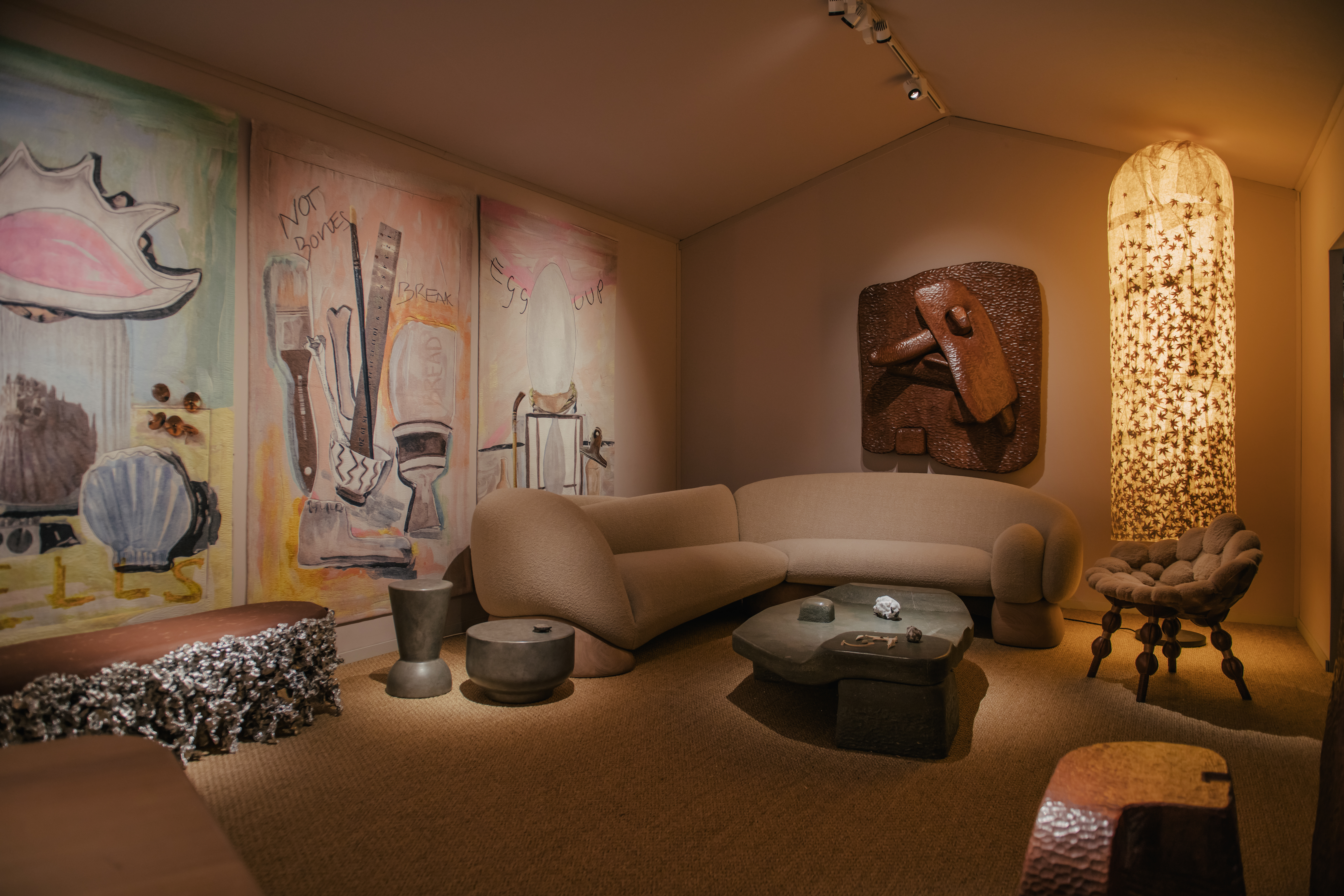 Step inside Faye Toogood's intimate cabinet of curiosities at PAD London
Step inside Faye Toogood's intimate cabinet of curiosities at PAD LondonFor PAD London 2025, (until 19 October) Faye Toogood presents The Magpie’s Nest with Friedman Benda
-
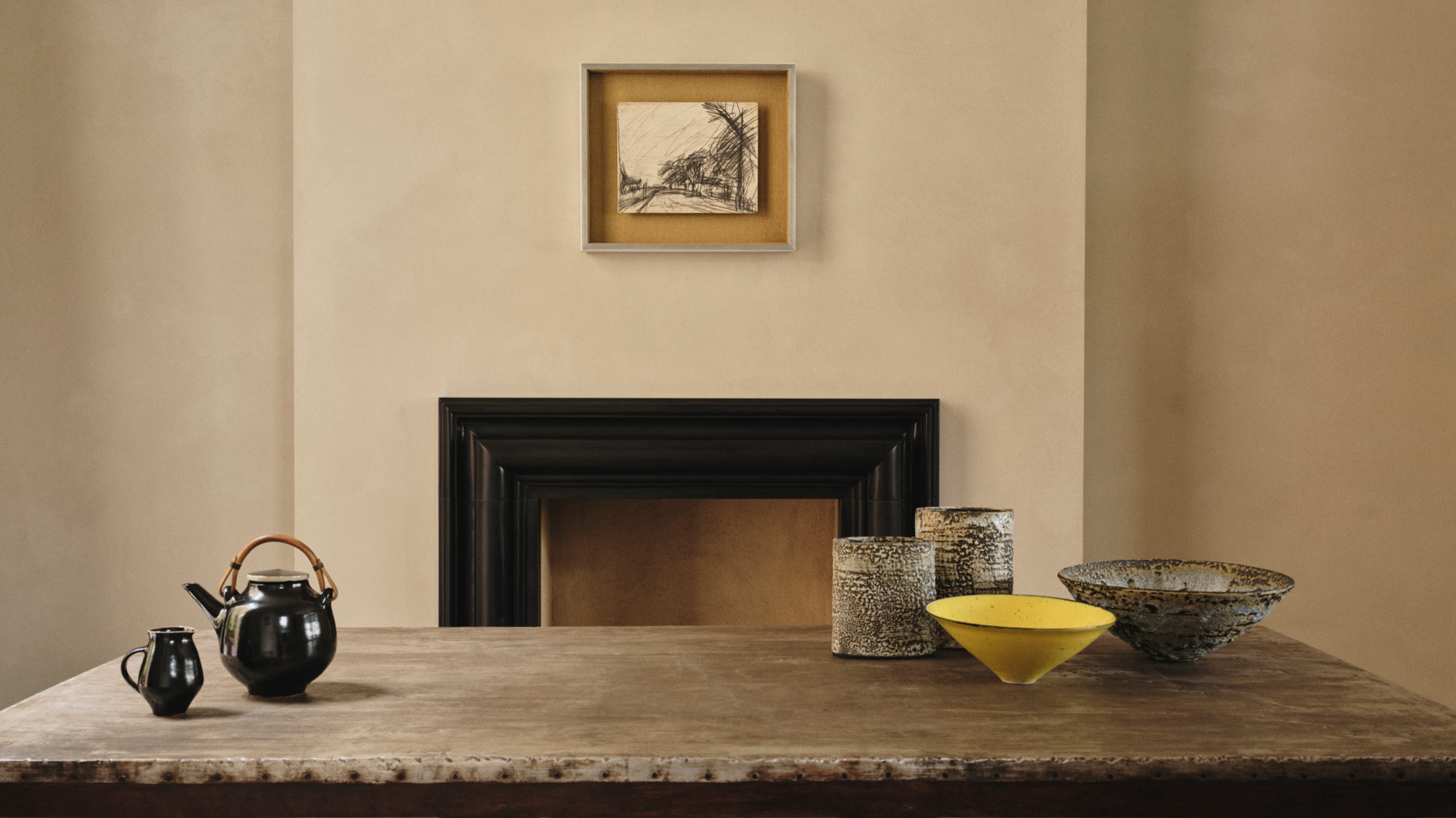 Rajan Bijlani opens his Primrose Hill home for ‘Electric Kiln’
Rajan Bijlani opens his Primrose Hill home for ‘Electric Kiln’In his London home – once the studio of ceramicist Emmanuel Cooper – Rajan Bijlani stages ‘Electric Kiln’, uniting Frank Auerbach, Lucie Rie and Cooper in an intimate reflection on the creative spirit of postwar London
-
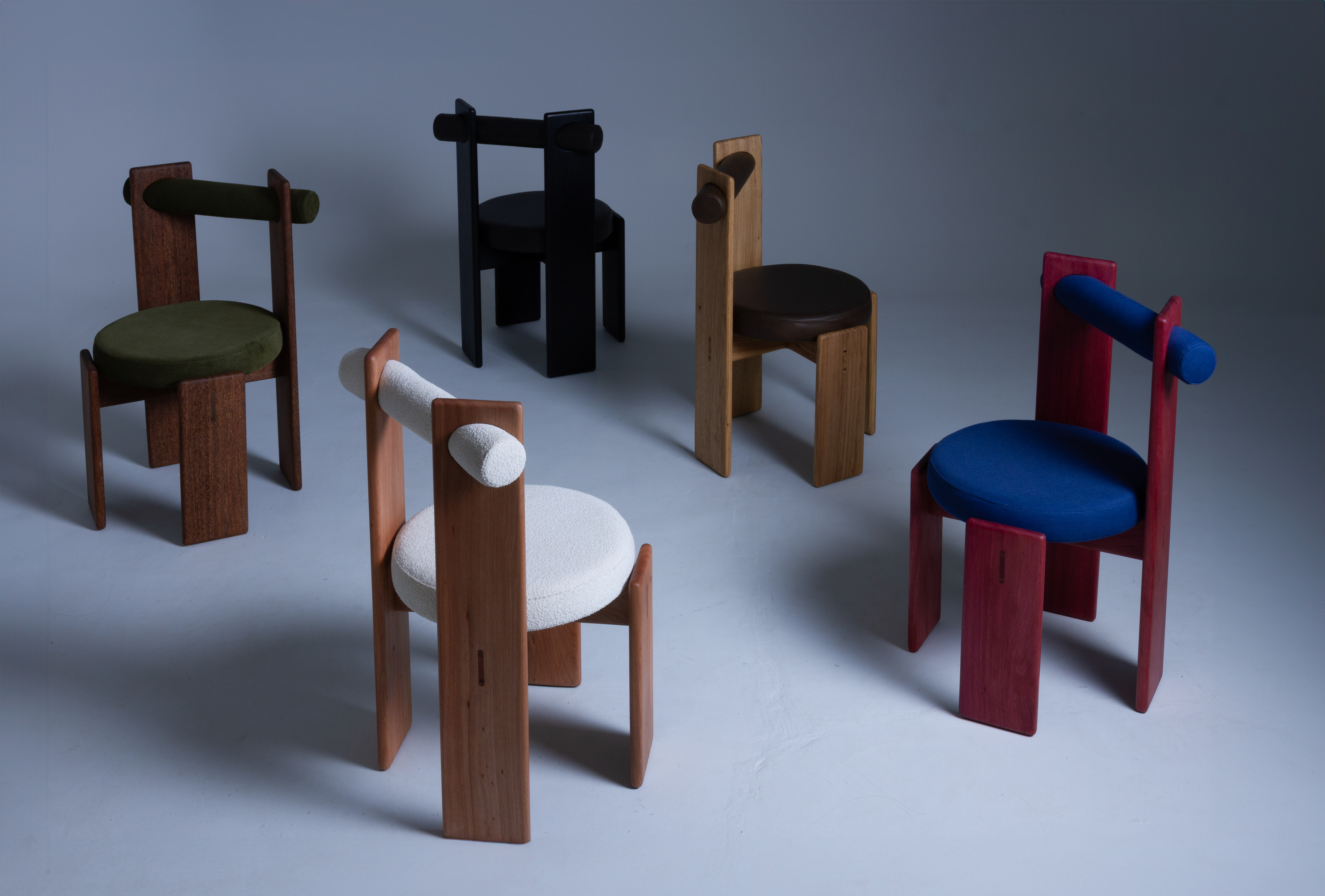 These are the design exhibitions to see in London during Frieze Week
These are the design exhibitions to see in London during Frieze WeekWe round up the best design events happening in London in conjunction with Frieze Week 2025: discover collectible design and craft across the city
-
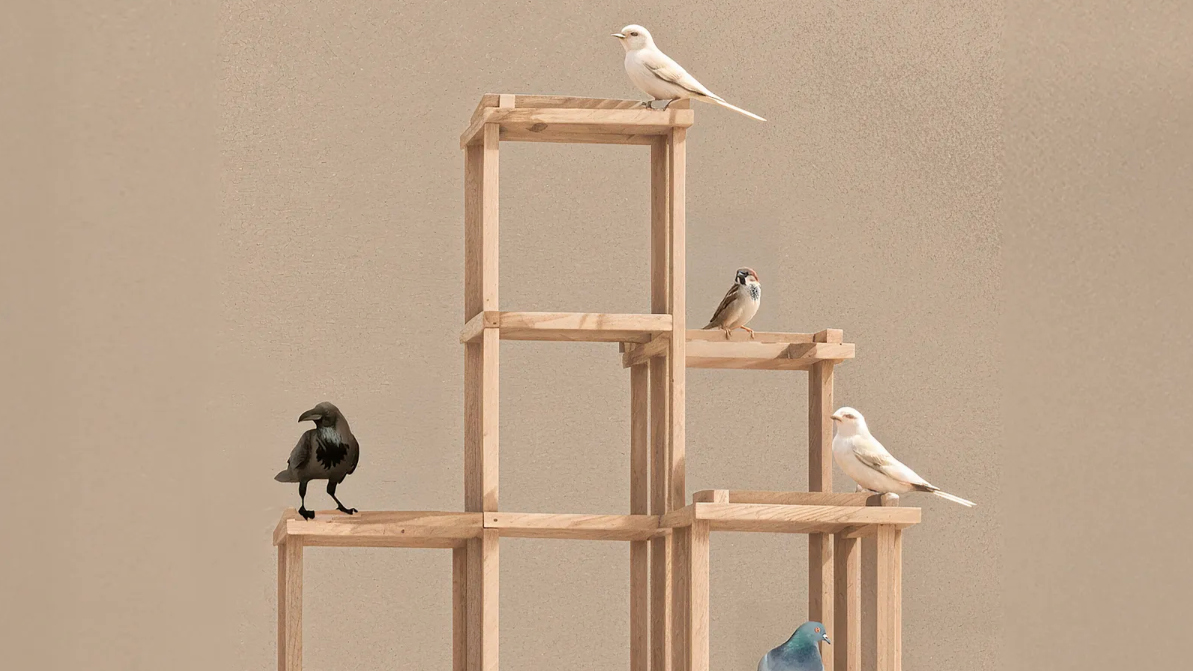 Norman Foster and nine other architects design birdhouses for charity – you can bid
Norman Foster and nine other architects design birdhouses for charity – you can bid‘Architects for the Birds’ is spearheaded by Norman Foster and the Tessa Jowell Foundation to raise funds to improve treatment for brain cancer. Ten architect-designed birdhouses will go up for auction
-
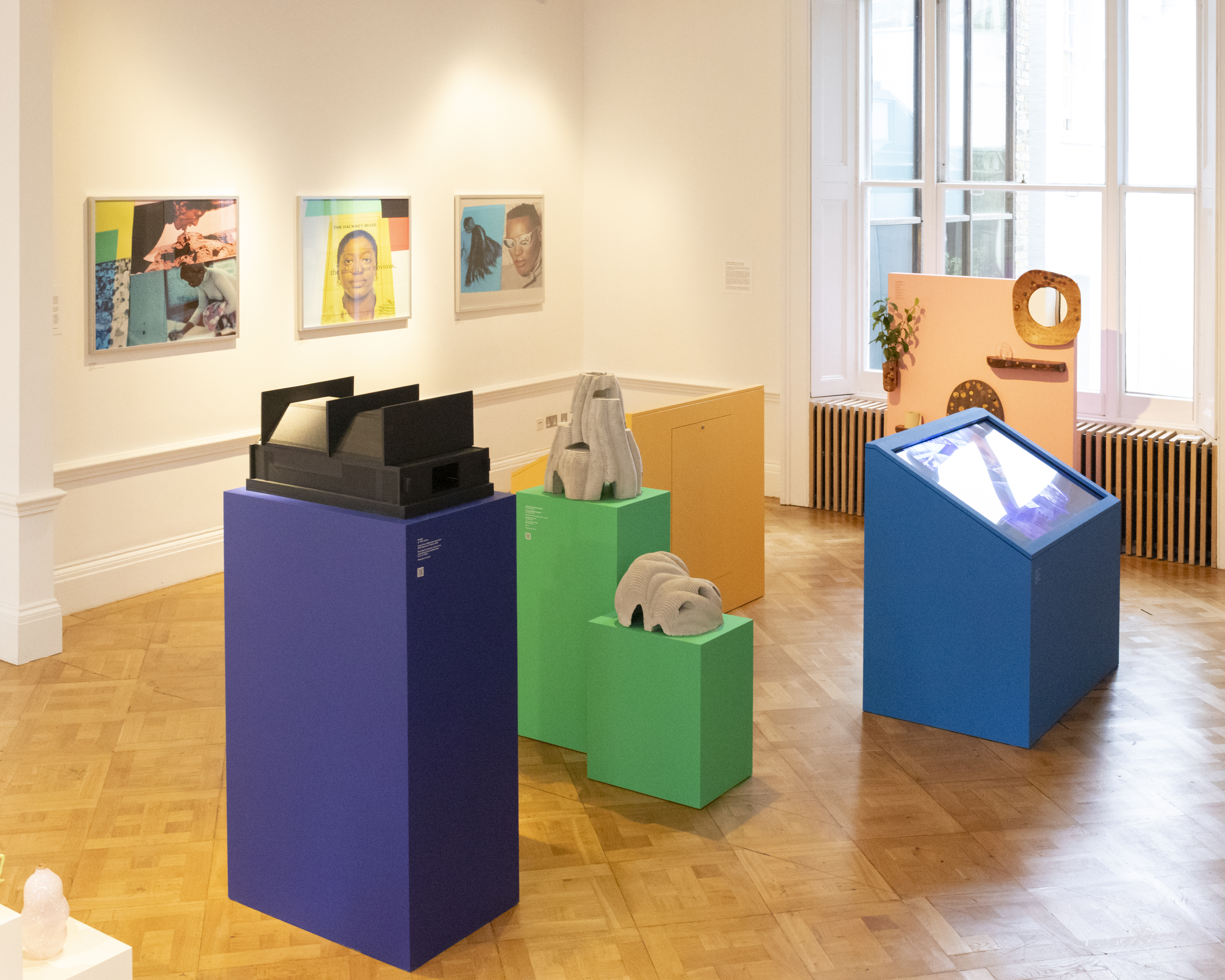 The David Collins Foundation celebrates creativity in all its forms at London Design Festival
The David Collins Foundation celebrates creativity in all its forms at London Design FestivalThe David Collins Foundation presents ‘Convergence’ at the Lavery during London Design Festival 2025 (on view until 19 September), featuring works from the Arts Foundation’s annual Futures Awards
-
 Lee Broom’s brutalist-inspired ‘Beacon’ will light up London as Big Ben strikes the hour
Lee Broom’s brutalist-inspired ‘Beacon’ will light up London as Big Ben strikes the hourSet to pulse through London Design Festival 2025 (13-22 September) and beyond, the British industrial designer’s sculptural light installation on the South Bank draws on its surroundings
-
 Yuri Suzuki turns sound into architecture at Camden Arts Projects
Yuri Suzuki turns sound into architecture at Camden Arts ProjectsThe sound designer unveils ‘Utooto’, an interactive installation at London’s Camden Arts Projects (until 5 October 2025), in which visitors collaboratively build a sonic piece of architecture
-
 Alex Tieghi-Walker unveils his plans for Brompton Design District 2025
Alex Tieghi-Walker unveils his plans for Brompton Design District 2025Ahead of London Design Festival 2025, we catch up with New York gallerist Alex Tieghi-Walker about his appointment as curator of the Brompton Design District programme